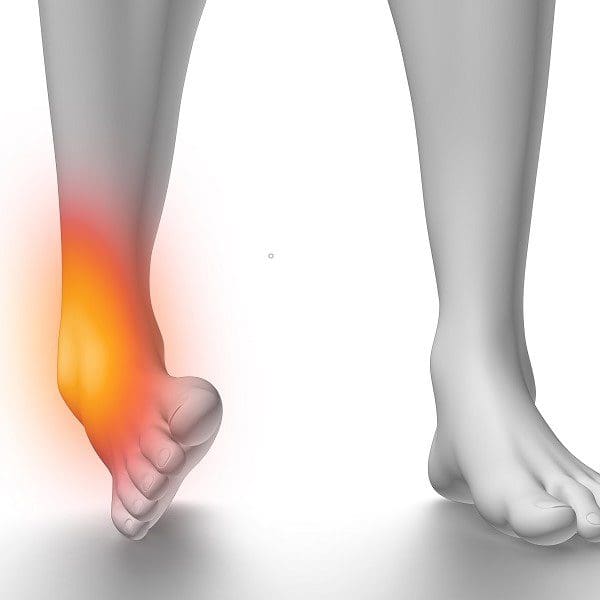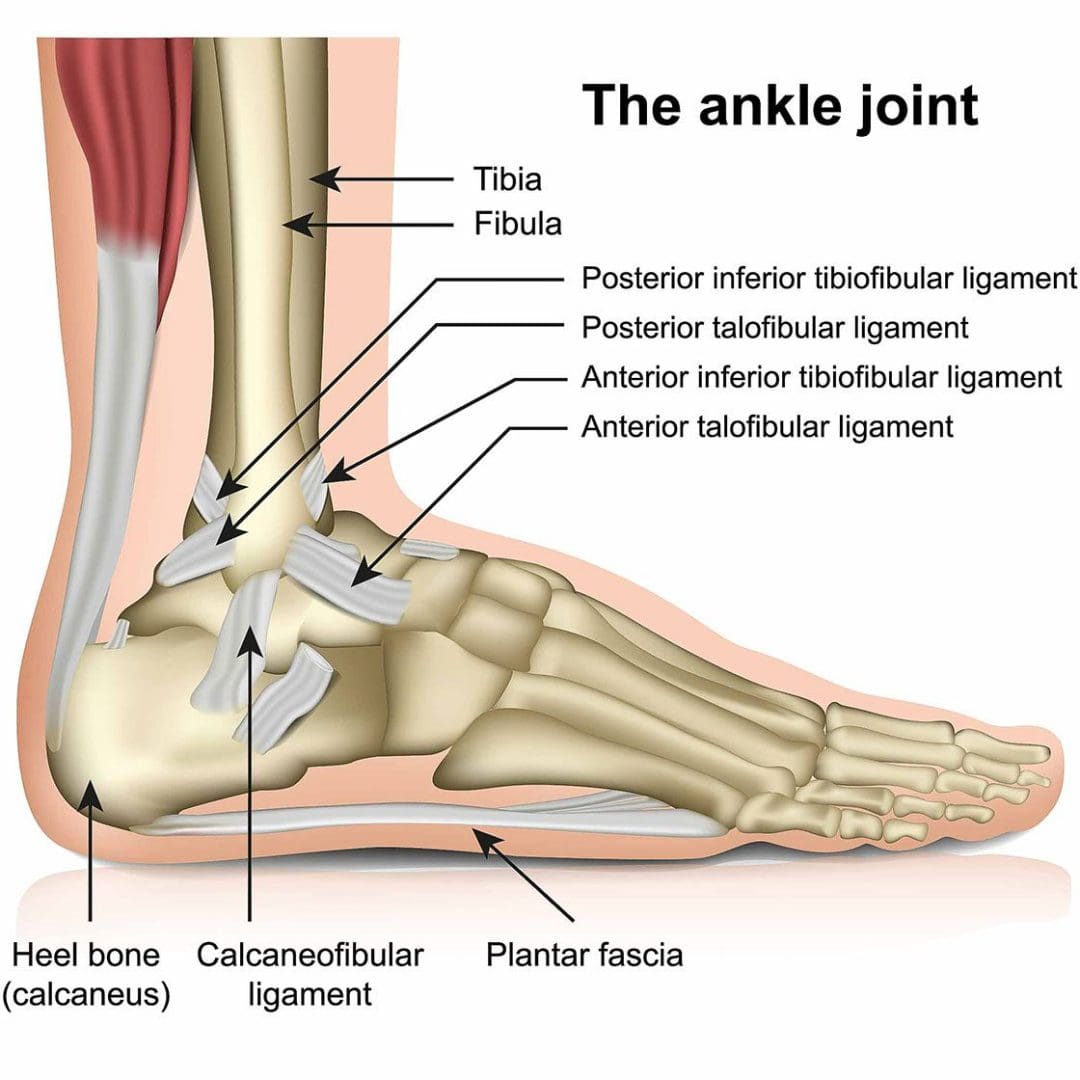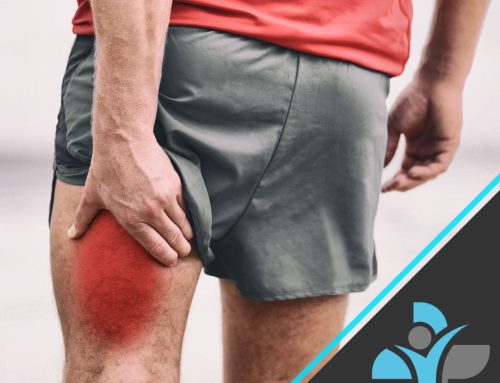
Overview
A lateral ligament sprain within the ankle complex is one of the most frequently injured area within the body, being encountered at 83% in sports such as football and many athletic events.
The main mechanism of this occurring is when an individual will be placed in excessive inversion and internal rotation of the foot whilst the leg is forced into external rotation. The anterior talo-fibula ligament is thought to be the most susceptible within this Injury.
As soon as athlete or personnel have sustained a lateral ankle injury, mechanical limitations and neuromuscular control of the joint becomes effected, for example; ligamentous tear, reduced strength and loss of balance. Due to these influences effecting the ankle joint, it leads to a 73% chance of recurrent damage and injury within one year, especially if correct and safe rehabilitation is not carried out.
Anatomy
The ankle complex consists of three key joints; these are the talocrural, subtalar and distal tibiofibular. The talocrural joint is known as a hinge joint, movements such as plantarflexion, dorsiflexion, inversion and eversion can be experienced. However due to the fibula being protracted superiorly towards the lateral malleolus compared to the tibia with medial malleolus, eversion movements become restricted. Therefore, implying why inversion injuries may be more frequent in the lateral ankle complex.

Symptoms
A few symptoms of a lateral ankle sprain are as follows:
- Tenderness and swelling
- Bruising around the ankle joint
- Tenderness on palpation around the joint
- Unable to place full body weight onto the joint
- Restricted range of movement
- General pain and discomfort
Causes
A lateral ankle sprain may occur when the ankle joint is forced out of its natural position, causing an overstretch within the ligaments around the joint, therefore resulting in a possible partial tear or complete tear. Some causes may consist of wrongly falling on the ankle causing it to twist. Awkwardly landing from a jump or pivoting. Walking or running on an uneven surface resulting in loss of balance, or another person unintentionally landing onto the ankle during a sporting event.
Diagnosis
An injury to the ankle complex is classified by grades I to III to distinguish the severity of ligamentous damage and indisposition of the sprain. Lateral ankle injuries consist of two types of dysfunction, one being mechanical instability and the other being functional instability.
Both of these elements influence the acute injury, implying that once an individual has sustained a lateral ankle injury, a development of chronic ankle instability may transpire in the near future. The incidence of CAI may be present due to mechanical instability from where ligaments have not healed properly in the ankle region and joint laxity becomes effected.
Specific Tests can also be used to help with the diagnosis of a lateral ankle sprain:
- The Anterior Draw test: Tests the ATFL
- Talar tilt test: Tests the CFL
- Posterior Draw test: Tests the PTFL
Treatment
Treatment for a lateral ankle sprain can vary as it will be dependant on the severity of the injury.
- The first step that should be taken 24-72 hours after the injury is sustained would be to reduce the amount of swelling around the joint. An individual should follow the RICE model. Rest, Ice Compress and Elevate. This would include using a cold compress on the ankle and making sure no weight is placed onto the joint.
- Soft tissue massage therapy may also be used to assist with the removal of oedema and aid in mild stretching. However, this technique should only be performed once swelling and bruising has reduced around the joint.
- Once the ankle can handle some weight being placed onto it, rehabilitation exercises given by a Physiotherapist or doctor should be performed. This will help decrease stiffness around the joint, increase ankle strength and prevent any further complications such as long-term chronic ankle instability issues. These exercises may consist of proprioceptive, strengthening and early motion specific training exercises.
Exercises
Here is a list of exercises specifically for lateral ankle sprain injuries:
- Single leg squat (use chair to hold onto if needed)
- Single leg squat (use chair to hold onto if needed)
- Single leg hip abduction
- Wobble board balance on one leg
- Standing single leg balance
- Star excursion balance test
Prevention
To assist in the prevention of a lateral ankle sprain from reoccurring you should:
- Ensure a full warm up and cool down is performed before and after taking part in Sporting events or exercise activities.
- Wear the correct footwear that is made for your activity e.g., suitable running trainers when going for a run.
- If suffered with an ankle sprain before then use protective equipment such as a brace or tape to add extra support to the ankle.
- Perform some form of stability training and balance exercises regularly.
- Use strengthening exercises for the ankle joint.
- Make sure any rehabilitation strategies are executed and performed daily.



